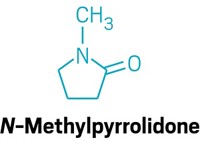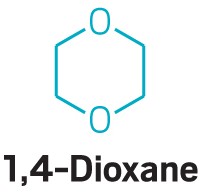Advertisement
Grab your lab coat. Let's get started
Welcome!
Welcome!
Create an account below to get 6 C&EN articles per month, receive newsletters and more - all free.
It seems this is your first time logging in online. Please enter the following information to continue.
As an ACS member you automatically get access to this site. All we need is few more details to create your reading experience.
Not you? Sign in with a different account.
Not you? Sign in with a different account.
ERROR 1
ERROR 1
ERROR 2
ERROR 2
ERROR 2
ERROR 2
ERROR 2
Password and Confirm password must match.
If you have an ACS member number, please enter it here so we can link this account to your membership. (optional)
ERROR 2
ACS values your privacy. By submitting your information, you are gaining access to C&EN and subscribing to our weekly newsletter. We use the information you provide to make your reading experience better, and we will never sell your data to third party members.
Chemical Regulation
US EPA to regulate 1-bromopropane
Carcinogenic solvent poses risk to consumers and workers, agency concludes
by Cheryl Hogue
August 12, 2020
| A version of this story appeared in
Volume 98, Issue 31
Within the next 2 years, the US Environmental Protection Agency will regulate certain uses of the carcinogenic solvent 1-bromopropane, the EPA says.

This follows the Aug. 11 release of the agency’s final risk assessment of 1-bromopropane which finds that the chemical poses unreasonable risk to the health of workers, consumers, and bystanders in more than a dozen of its uses. The conclusions are essentially the same as the EPA’s 2019 draft assessment.
New regulations under the Toxic Substances Control Act could involve restrictions or a ban on manufacture, processing, uses, or disposal of the chemical, the EPA says.
Most commercial uses of the chemical, in vapor degreasing, dry cleaning, adhesives, cleaners, and automotive care products, pose an unreasonable risk to workers through inhalation, the EPA says. At risk are workers who are in direct contact with 1-bromopropane as well as those who work nearby.
Consumers can inhale 1-bromopropane or absorb it through their skin when using products containing the chemical. These include aerosol spray degreasers and cleaners, adhesives uses in crafting, spot and stain removers, and automotive care products such as air conditioning system cleaners, the EPA says. People who aren’t using the product but are nearby can also be exposed via inhalation.
Environmental advocates fault the final risk assessment for failing to consider 1-bromopropane exposures and risks to the general public, such as through environmental contamination, a point that the EPA’s science advisers also raised.





Join the conversation
Contact the reporter
Submit a Letter to the Editor for publication
Engage with us on Twitter